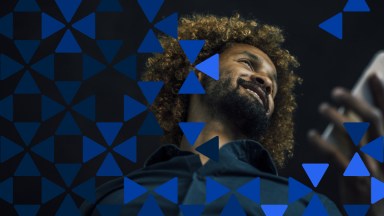Modern culture in many countries is more versed in diversity, equity and inclusion than it once was, but the need for continued progress is ever present, especially for LGBTQ+ people around the world. The global media industry can help on this front, and many people within the LGBTQ+ community are hoping it will lean in to evoke change and progress.

The headwinds that LGBTQ+ people face vary by country and community, but the community is increasingly looking to the media industry to provide more than just new inclusive and representative programming to watch. In fact, recent Nielsen research1 found that more than one-third of LGBTQ+ respondents globally are comfortable with brands reaching out to them as members of the LGBTQ+ community.
In the face of discriminatory policies often designed to marginalize LGBTQ+ people, these consumers are looking to brands to take the lead on embracing inclusion. Within the nine countries included in the survey supporting this recent research, the LGBTQ+ communities in Mexico and the U.S. are the most comfortable with inclusive campaigns, as more than half of the LGBTQ+ respondents there signaling they’re open to brand messaging.
Most visibly, inclusivity and progress is most evident in TV and film. The calls for inclusion have been building steadily, and on-screen representation and thematic content have increased significantly over the past two decades. But momentum to advance more inclusive LGBTQ+ stories on screen is still needed. In fact, the premiere of new titles within the LGBTQ+ genre actually declined from 50 titles in 2020 to 36 titles in 20212.
LGBTQ+ audiences view movies, TV programs and social media as the most inclusive content and channels, with streaming standing out as the perceived most inclusive environment. Globally, respondents are 10% more likely than the general population to view streaming video as the most inclusive content type. The presence of an LGBTQ+ character or cast member is a start, but audiences are also looking for diversity in storylines, authenticity in experiences and content that inspires—a variety that streaming libraries seem to deliver on more consistently.
According to GLAAD’s most recent analysis, for example, the number of LGBTQ+ lead or recurring characters across eight global streaming platforms was two-and-a-half times higher than it was on U.S. broadcast and primetime cable programming.
In aggregate, however, there is much work to be done. While Gracenote Global Video Data had identified 817,000 unique video titles as of February 2022, there are just over 1,000 within the LGBTQ+-related genre.
The geographic scope of the LGBTQ+ titles is more impressive, as more than 30 languages are represented, and 22% of the titles were developed in languages other than English. French (France and Canada) and German account for approximately 4% each, followed by Spanish language content, at nearly 3%.
From a production perspective, the U.S. leads in producing TV content that includes LGBTQ+ themes and storylines3. Not only does the production satiate audiences seeking representative content, but the content that is ad-supported provides brands with a medium to engage with consumers who are open to brands engaging with them based on sexual orientation and gender. According to Nielsen’s State of Play report, ad-supported programming in the U.S. from AVOD, MVPD and vMVPD accounted for 35% of streaming minutes during the second half of last year.
Increased inclusion could lead to increased loyalty among consumers, as a 2021 Nielsen identity and representation study found that more than 40% of respondents are more likely to buy products from brands that advertise within content that features someone from their identity group.
For additional insights, download our recent global LGBTQ+ report.
Notes
- Nielsen international LGBTQ+ inclusive media perceptions study, 2022
- Gracenote Video Descriptors
- Gracenote Studio System



